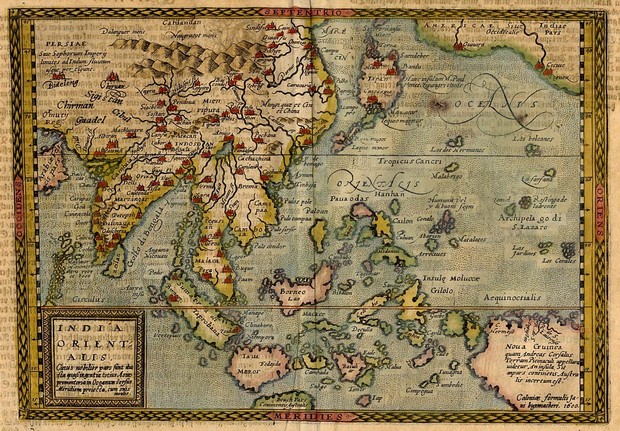By Geoffrey Goble
Nalanda-Sriwijaya Centre Working Paper Series No.16 (2014)
Introduction: The following are annotated, critical translations of monographs from the Older and Newer Tang Histories concerning the foreign peoples and kingdoms of Maritime Southeast Asia. Both compiled from materials produced at the cusp of Śrīvijaya’s ascendancy in the region, these Chinese texts are two of the most important sources for our understanding of the early peoples and polities of Maritime Southeast Asia. These passages have provided the basis of much that has been written concerning these early kingdoms, but they are here presented for the first time in their entirety. These translations should prove valuable to researchers of Maritime Southeast Asia who do not work in Chinese language materials. With this audience in mind I will refrain from interpreting the information concerning local economies, cultural practice, and the like that these sources provide and instead address the nature of the sources themselves.
The materials translated here are drawn from the Older Tang History (Jiu Tangshu 舊唐書) and the Newer Tang History (Xin Tangshu 新唐書). These works are from a genre of Chinese text commonly referred to today as ‘Standard Histories’ (zhengshi正史). Although varying widely in style, content, and manner of production, the Standard Histories typically serve as the official history of a given dynasty produced under the auspices of its successor. Although not true universally of Standard Histories, such is the case here. Both the Older and Newer Tang History are largely based on documents produced during the Tang Dynasty (618–907), the main genre of which were contemporary national histories (guoshi 國史) and veritable records (shilu 實錄). The veritable records were themselves products of functionaries in the imperial Chinese government who composed them on the basis of an assortment of texts—court diaries (qijuzhi 起居注), confidential government records (shizhengji 時政記), daily calendars (rili 日曆), and so forth. Largely based on Tang Dynasty national histories and veritable records, both the Older and Newer Tang History were produced by scholar-officials working within the governments of successor states to the Tang, the former from the Later Jin 後晉 Dynasty (936–947) and the latter from the Song 宋 Dynasty (960–1279). Consequently, the Older and Newer Tang History are best understood as products of compositional and editorial processes spanning centuries.
The importance of these sources to scholars of Maritime Southeast Asia rests in the fact that the Chinese documents are often the only written sources available to us—in several cases, the only sources at all—for the peoples, cultures, and polities of the region at the time. As such, they are often relied upon in order to gain an understanding of Maritime Southeast Asia in the first millennium of the Common Era. But, however valuable the Chinese sources may be in this regard, they cannot be treated uncritically. We must remain mindful of the fact that they were produced through elaborate processes of transcription, editing, compilation, and redaction. In order to better understand what these sources can tell us about the peoples of Maritime Southeast Asia, we must first recognize the cultural and epistemic forces that shape their representation in the Chinese texts.

No comments:
Post a Comment